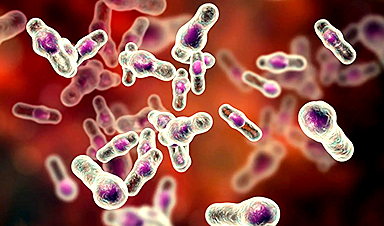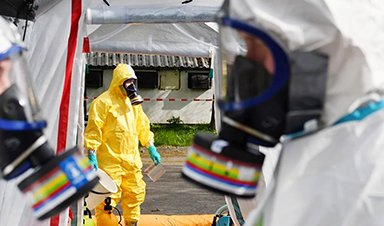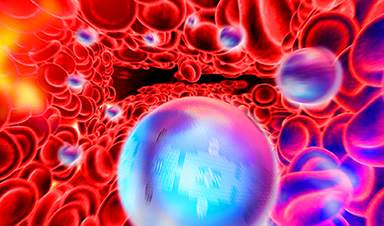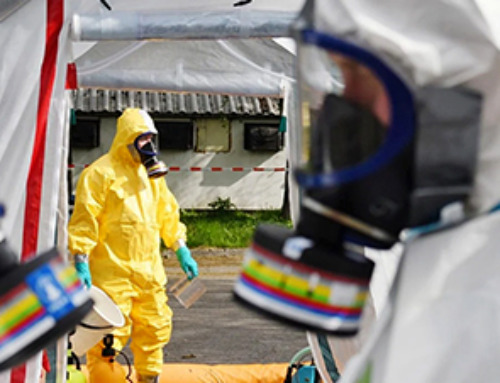C. diff might not originate from external transmission but rather from within the infected patient themselves.
Hospital staff dedicate significant effort to safeguard patients from infections during their hospital stay. Through practices ranging from hand cleanliness to the use of isolation rooms and stringent cleaning procedures, they strive to prevent infections. Yet, even with these measures, hospital-onset infections still occur—the most common of which is caused by the bacterium Clostridioides difficile, or C. diff, the culprit of almost half a million infections in the U.S. each year.
Surprising findings from a new study in Nature Medicine suggest that the burden of C. diff infection may be less a matter of hospital transmission and more a result of characteristics associated with the patients themselves.
The study team, led by Evan Snitkin, Ph.D. and Vincent Young, M.D., Ph.D., both members of the Departments of Microbiology & Immunology and Internal Medicine/Infectious Diseases at the University of Michigan Medical School and Mary Hayden, M.D. of Rush University Medical Center, leveraged ongoing epidemiological studies focused on hospital-acquired infections that enabled them to analyze daily fecal samples from every patient within the intensive care unit at Rush University Medical Center over a nine-month period.
"By systematically culturing every patient, we thought we could understand how transmission was happening. The surprise was that, based on the genomics, there was very little transmission."
Essentially, there was very little evidence that the strains of C. diff from one patient to the next were the same, which would imply in-hospital acquisition. In fact, there were only six genomically supported transmissions over the study period. Instead, people who were already colonized were at greater risk of transitioning to infection.
"Something happened to these patients that we still don't understand to trigger the transition from C. diff hanging out in the gut to the organism causing diarrhea and the other complications resulting from infection," said Snitkin.
Hayden notes this doesn't mean hospital infection prevention measures are not needed. In fact, the measures in place in the Rush ICU at the time of the study – high rates of compliance with hand hygiene among healthcare personnel, routine environmental disinfection with an agent active against C diff, and single patient rooms – were likely responsible for the low transmission rate. The current study highlights, though that more steps are needed to identify patients who are colonized and try to prevent infection in them.
Where did the C. diff come from? "They are sort of all around us," said Young. "C. diff creates spores, which are quite resistant to environmental stresses including exposure to oxygen and dehydration…for example, they are impervious to alcohol-based hand sanitizer."
However, only about 5% of the population outside of a healthcare setting has C. diff in their gut—where it typically causes no issues.
"We need to figure out ways to prevent patients from developing an infection when we give them tube feedings, antibiotics, proton pump inhibitors—all things which predispose people to getting an actual infection with C. diff that causes damage to the intestines or worse," said Young.
The team next hopes to build on work investigating the use of A.I. models to predict patients at risk of C. diff infection to identify patients who are likely to be colonized and who could benefit from more focused intervention.
Said Snitkin, "A lot of resources are put into gaining further improvements in preventing the spread of infections, when there is increasing support to redirect some of these resources to optimize the use of antibiotics and identify other triggers that lead patients harboring C diff and other healthcare pathogens to develop serious infections."
Reference: "Longitudinal genomic surveillance of carriage and transmission of Clostridioides difficile in an intensive care unit" by Arianna Miles-Jay, Evan S. Snitkin, Michael Y. Lin, Teppei Shimasaki, Michael Schoeny, Christine Fukuda, Thelma Dangana, Nicholas Moore, Sarah E. Sansom, Rachel D. Yelin, Pamela Bell, Krishna Rao, Micah Keidan, Alexandra Standke, Christine Bassis, Mary K. Hayden and Vincent B. Young, 18 September 2023, Nature Medicine.
DOI: 10.1038/s41591-023-02549-4
The study was funded by the National Institutes of Health and the Centers for Disease Control and Prevention.
News
Fever-Proof Bird Flu Variant Could Fuel the Next Pandemic
Bird flu viruses present a significant risk to humans because they can continue replicating at temperatures higher than a typical fever. Fever is one of the body’s main tools for slowing or stopping viral [...]
What could the future of nanoscience look like?
Society has a lot to thank for nanoscience. From improved health monitoring to reducing the size of electronics, scientists’ ability to delve deeper and better understand chemistry at the nanoscale has opened up numerous [...]
Scientists Melt Cancer’s Hidden “Power Hubs” and Stop Tumor Growth
Researchers discovered that in a rare kidney cancer, RNA builds droplet-like hubs that act as growth control centers inside tumor cells. By engineering a molecular switch to dissolve these hubs, they were able to halt cancer [...]
Platelet-inspired nanoparticles could improve treatment of inflammatory diseases
Scientists have developed platelet-inspired nanoparticles that deliver anti-inflammatory drugs directly to brain-computer interface implants, doubling their effectiveness. Scientists have found a way to improve the performance of brain-computer interface (BCI) electrodes by delivering anti-inflammatory drugs directly [...]
After 150 years, a new chapter in cancer therapy is finally beginning
For decades, researchers have been looking for ways to destroy cancer cells in a targeted manner without further weakening the body. But for many patients whose immune system is severely impaired by chemotherapy or radiation, [...]
Older chemical libraries show promise for fighting resistant strains of COVID-19 virus
SARS‑CoV‑2, the virus that causes COVID-19, continues to mutate, with some newer strains becoming less responsive to current antiviral treatments like Paxlovid. Now, University of California San Diego scientists and an international team of [...]
Lower doses of immunotherapy for skin cancer give better results, study suggests
According to a new study, lower doses of approved immunotherapy for malignant melanoma can give better results against tumors, while reducing side effects. This is reported by researchers at Karolinska Institutet in the Journal of the National [...]
Researchers highlight five pathways through which microplastics can harm the brain
Microplastics could be fueling neurodegenerative diseases like Alzheimer's and Parkinson's, with a new study highlighting five ways microplastics can trigger inflammation and damage in the brain. More than 57 million people live with dementia, [...]
Tiny Metal Nanodots Obliterate Cancer Cells While Largely Sparing Healthy Tissue
Scientists have developed tiny metal-oxide particles that push cancer cells past their stress limits while sparing healthy tissue. An international team led by RMIT University has developed tiny particles called nanodots, crafted from a metallic compound, [...]
Gold Nanoclusters Could Supercharge Quantum Computers
Researchers found that gold “super atoms” can behave like the atoms in top-tier quantum systems—only far easier to scale. These tiny clusters can be customized at the molecular level, offering a powerful, tunable foundation [...]
A single shot of HPV vaccine may be enough to fight cervical cancer, study finds
WASHINGTON -- A single HPV vaccination appears just as effective as two doses at preventing the viral infection that causes cervical cancer, researchers reported Wednesday. HPV, or human papillomavirus, is very common and spread [...]
New technique overcomes technological barrier in 3D brain imaging
Scientists at the Swiss Light Source SLS have succeeded in mapping a piece of brain tissue in 3D at unprecedented resolution using X-rays, non-destructively. The breakthrough overcomes a long-standing technological barrier that had limited [...]
Scientists Uncover Hidden Blood Pattern in Long COVID
Researchers found persistent microclot and NET structures in Long COVID blood that may explain long-lasting symptoms. Researchers examining Long COVID have identified a structural connection between circulating microclots and neutrophil extracellular traps (NETs). The [...]
This Cellular Trick Helps Cancer Spread, but Could Also Stop It
Groups of normal cbiells can sense far into their surroundings, helping explain cancer cell migration. Understanding this ability could lead to new ways to limit tumor spread. The tale of the princess and the [...]
New mRNA therapy targets drug-resistant pneumonia
Bacteria that multiply on surfaces are a major headache in health care when they gain a foothold on, for example, implants or in catheters. Researchers at Chalmers University of Technology in Sweden have found [...]
Current Heart Health Guidelines Are Failing To Catch a Deadly Genetic Killer
New research reveals that standard screening misses most people with a common inherited cholesterol disorder. A Mayo Clinic study reports that current genetic screening guidelines overlook most people who have familial hypercholesterolemia, an inherited disorder that [...]





















